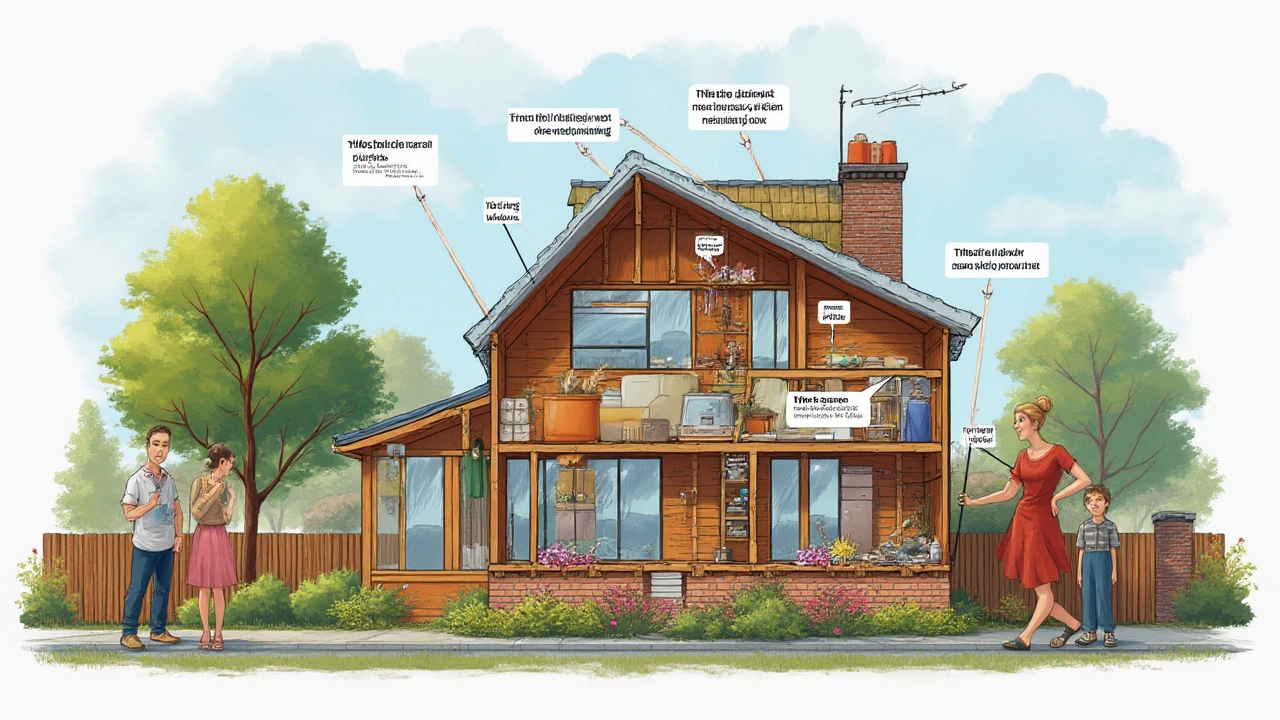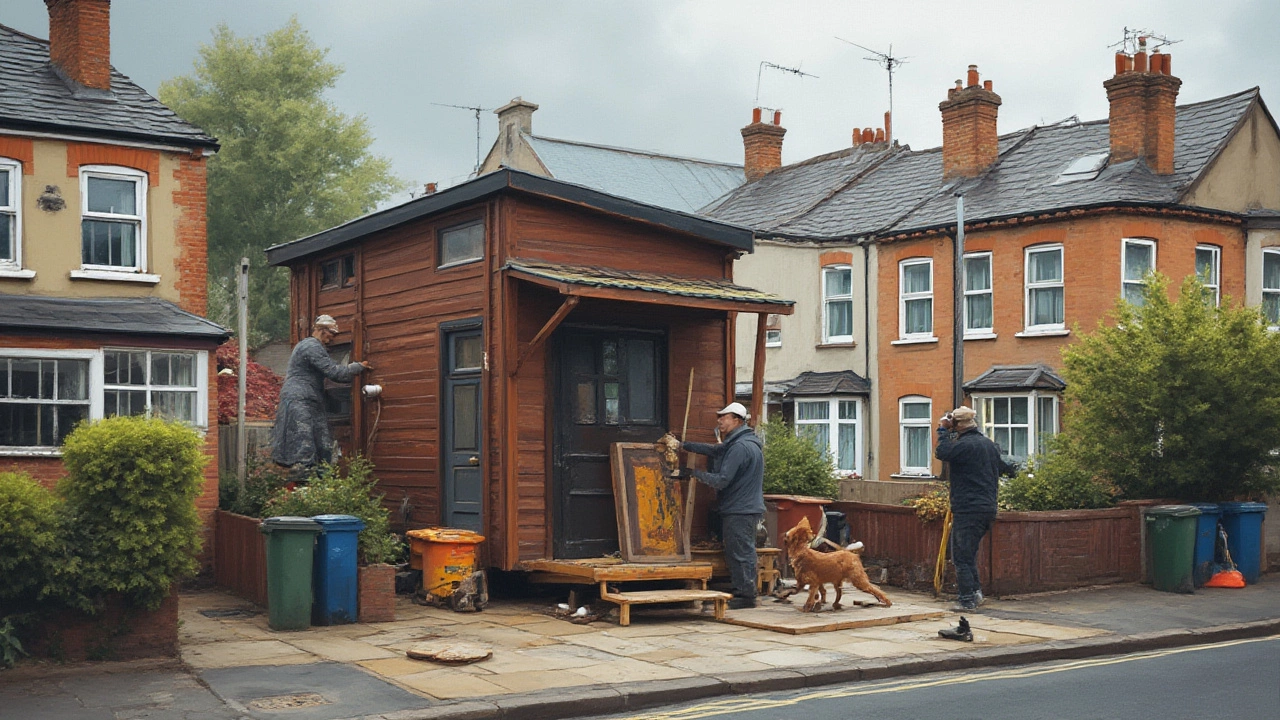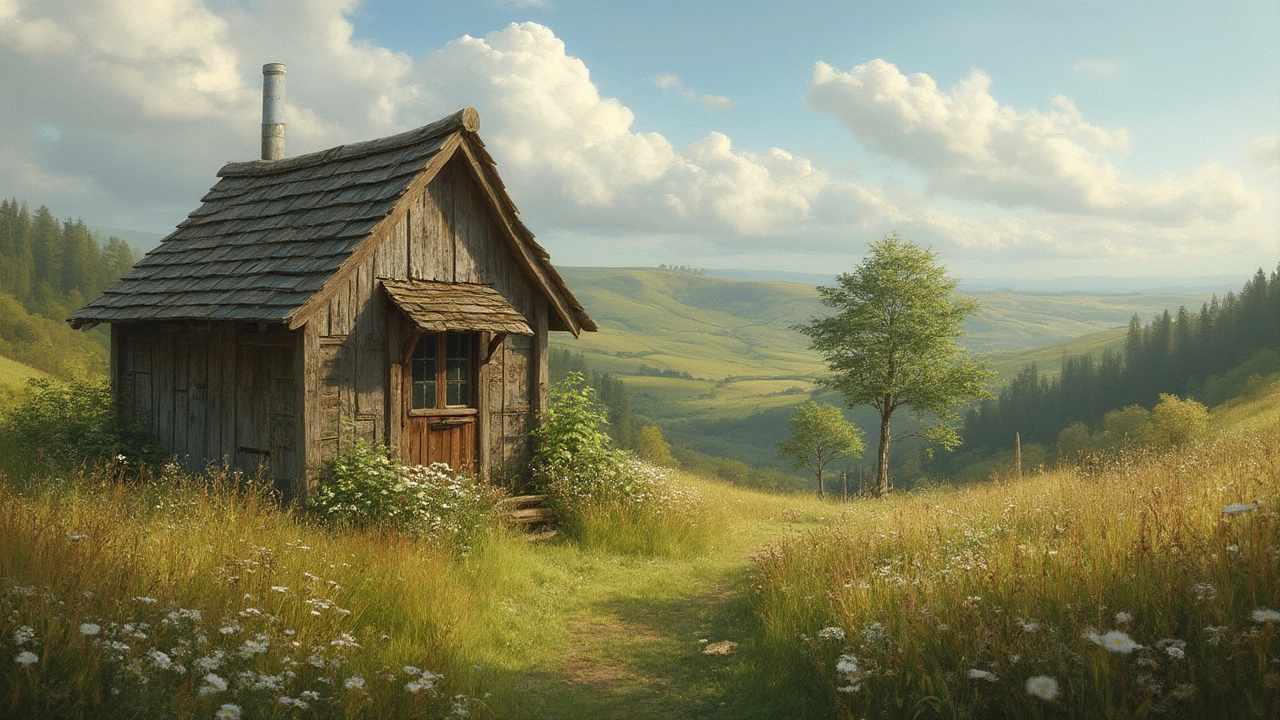Picture a tiny house perched on a lakeshore, ten years old and still hip as the day it was built. Now imagine another tiny home, just five years in, creaking and sagging with warped floors and a leaky roof. Why do some go the distance while others fizzle out?
The dream of living small appeals to a lot of people these days. The size is alluring and the eco-friendly lifestyle checks a lot of boxes. But here’s the big, rarely discussed question every would-be tiny homeowner faces: “How long will my tiny house actually last?” Most TV shows gloss over this detail, but lifespan is a deal-breaker for your wallet and your future plans. I’ve done the digging—here’s what’s real.
Factors That Shape the Life Expectancy of a Tiny House
The first thing everyone wants to know: how many years are we talking, really? The average lifespan of a well-cared-for tiny home can stretch from 20 to 50 years. That’s a pretty wide range. What closes (or widens) this gap boils down to a few key things.
Starting with materials, what you build with matters even more in a tiny space than in a regular house. Take cedar and redwood siding—these are rock stars for exterior protection, with lifespans topping 50 years if maintained. Cheap plywood or untreated lumber? That’ll have you patching holes just a few seasons in. Roofs get hit the hardest: a metal roof can shrug off 40 years of weather, while asphalt shingles might tap out after 15 or 20, especially if you’re in a rainy region.
There’s also the question of mobility. Parking your tiny house on a permanent foundation keeps wear and tear to a minimum. But if you’re towing it around like a turtle with a home on its back, all those bumps and shakes can knock years off its life. Chassis rust and cracked seams are a real headache for traveling homes. According to a 2023 survey by TinyHomeBuilders.com, stationary tiny houses, on average, lasted 30% longer before needing major repairs compared to road warriors.
Insulation and moisture play sneaky roles too. A good vapor barrier and well-sealed windows and doors mean your house can handle wild weather without mold or rot. If your build skimps on these steps, you’ll face soft floors or nasty smells in just a couple of years. It doesn’t matter how cute those Instagram photos look; moisture wins every battle you ignore.
And don’t forget about the builder. DIY builds with shortcuts or little experience may have hidden mistakes that only pop up after a few seasons. Professionally built tiny houses, especially those certified by builders following standards like NOAH (National Organization of Alternative Housing) or RVIA (Recreational Vehicle Industry Association), typically fare better. A 2019 NOAH review found that certified homes had 40% fewer reported warranty claims over the first 10 years. Quality and craftsmanship aren’t buzzwords—they’re your insurance policy.

How to Make Your Tiny House Last Longer
If you already own a tiny house, you surely want it to outlive your cat. The good news: doubling its lifespan is more about regular TLC than using fancy tech or turning it into a bunker. Tiny homes might be small, but the upkeep isn’t less important than a full-sized house. In fact, tiny means less margin for error.
Start with routine inspections. At least twice a year, grab a flashlight and get nosy. Check the underside for rust if you’re on wheels, and glance over the roof for loose panels or small punctures. Cracks around windows and doors? Caulk them before the next rain finds its way in. These five minutes of work each season can stop a small leak from becoming a big moldy disaster.
Paint, stain, or seal your siding every few years—especially if your home is in a wet climate. Sun, snow, and wind don’t take breaks, and neither can you when it comes to siding maintenance. A fresh coat extends wood life by decades. And if you spot a patch of peeling or cracking now, it’ll cost a lot less to fix than replacing the entire side.
Moisture management is an underappreciated skill in tiny home life. If you cook a lot or shower often (and who doesn’t?), install a vent fan that actually vents outside. Tiny spaces fill up with humidity fast, and that’s a recipe for wood rot and weird smells. Consider a compact dehumidifier—one meant for RVs works wonders.
Keep in mind, plumbing lines in a tiny house can freeze up a lot quicker, especially if you’re in the mountains or a chilly state. Wrap pipes and install a heat trace cable if you know winter is trouble. Burst pipes are a nightmare in any size home, but a single leaky pipe can practically flood a tiny house.
Track small fixes before they get big—and budget at least $300 to $500 annually for routine repairs. If you’re proactive, you catch issues like a loose shingle, a soft patch in the floor, or a sluggish drain well before they snowball. Many tiny house owners swear by an annual maintenance checklist to keep things humming years beyond their neighbors.
If your house is mobile, keep an eye on the chassis. Salt, mud, and grime can chew through metal way quicker than you’d think. After any trip, check for rust spots, keep it clean, and touch up paint or add a little rust inhibitor. Trailer failures aren’t just costly—they’re safety hazards.
| Component | Material | Expected Lifespan (Years) |
|---|---|---|
| Roof | Metal | 40-50 |
| Roof | Asphalt Shingles | 15-20 |
| Siding | Cedar/Redwood | 30-50 |
| Siding | Vinyl | 20-40 |
| Windows | Double-Pane Vinyl | 20-30 |
| Frame | Steel | 50+ |
| Frame | Wood | 20-40 |
| Chassis | Galvanized Steel | 20-30 |

What Lifespan Means for Tiny House Living—And Does It Matter?
Now comes the real question behind the stats and maintenance hacks: does the actual number of years matter? For some, yes. If you’re pouring retirement savings into a tiny home expecting it to be a forever nest, those top-end 50-year estimates matter. But for others—say, someone chasing adventure, seeking a cheaper entry to home ownership, or wanting a space that’s easy to move—“forever” might not even be the goal.
Worth knowing: resale values for tiny houses drop once a home hits the decade mark, especially if it’s seen a lot of road miles or repair shortcuts. Tiny House Marketplace data from late 2024 showed that a five-year-old, professionally maintained tiny house sold on average for 70% of its original price. By year ten, that number dipped below 50% unless impeccable records and photos proved its condition. Maintenance doesn’t just protect your living space—it keeps your investment from turning into a money pit.
Insurance companies are now getting in on the act. More are requiring proof of certified or professional builds before offering policies, and they look closely at maintenance logs. You might snag a better premium if you show off a detailed history of care and upgrades. Think of it as bragging rights that pay off.
Got eco-friendly ambitions? Tiny houses pack a greener punch if they last. Replacing a shoddy trailer every five years wipes out the carbon savings from downsizing in the first place. The greenest tiny homes are built to last multiple decades, using sustainable woods, recycled metal roofs, and non-toxic insulation. Look for salvaged timber or FSC-certified woods if you want planet-friendly bragging rights.
And here’s a thing hardly anyone talks about: human satisfaction. There’s something oddly motivating about sinking roots into a home you know can be with you for half a lifetime. People tend to upgrade, personalize, and care for homes they believe will last. That care loops back into actual longevity, creating a weird but satisfying side effect. Love your tiny house and treat it well, and it tends to love you right back.
For folks considering the tiny lifestyle, factoring in lifespan alongside cost, mobility, and amenities gives a full picture. Don’t just ask how tiny you can go—ask how long you want to stay small, and what it’ll take to enjoy every single year. Strong bones, smart maintenance, and a bit of heart: that’s what keeps a tiny house going strong.
So, when someone asks, "What is the tiny house lifespan really?" now you’ve got the real-world details to answer. It’s not a number set in stone. With savvy care, the right materials, and pride of ownership, your tiny home doesn't have to just look cute—instead, it can be the last house you ever buy or build.
